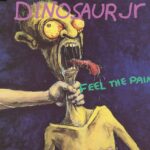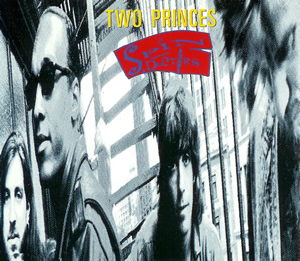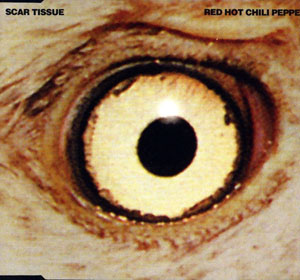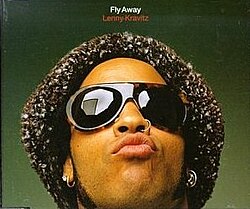 “Feel the Pain” by Dinosaur Jr stands as one of the great paradoxes of alternative rock in the 1990s: a song so blisteringly loud, raw, and feedback-soaked that it could peel paint off the walls, yet one that hides underneath all that distortion a strikingly delicate vulnerability. Released in 1994 on the band’s album Without a Sound, the track is widely regarded as one of Dinosaur Jr’s signature songs, the kind of track that simultaneously represented the band’s ethos and yet transcended it, pulling them from cult-favorite college radio darlings into wider recognition in the MTV age. To understand why “Feel the Pain” still resonates decades after its release, one must dig into its cultural moment, its sonic identity, its peculiar emotional undercurrent, and its role in shaping both the legacy of Dinosaur Jr and alternative music as a whole.
“Feel the Pain” by Dinosaur Jr stands as one of the great paradoxes of alternative rock in the 1990s: a song so blisteringly loud, raw, and feedback-soaked that it could peel paint off the walls, yet one that hides underneath all that distortion a strikingly delicate vulnerability. Released in 1994 on the band’s album Without a Sound, the track is widely regarded as one of Dinosaur Jr’s signature songs, the kind of track that simultaneously represented the band’s ethos and yet transcended it, pulling them from cult-favorite college radio darlings into wider recognition in the MTV age. To understand why “Feel the Pain” still resonates decades after its release, one must dig into its cultural moment, its sonic identity, its peculiar emotional undercurrent, and its role in shaping both the legacy of Dinosaur Jr and alternative music as a whole.
When Without a Sound arrived in 1994, Dinosaur Jr was already well established as a pioneer in the American underground. J Mascis, the band’s enigmatic guitarist, singer, and reluctant frontman, had by that point cemented his reputation as a guitar wizard whose work fused classic rock bombast with indie-rock intimacy. Alongside Lou Barlow and Murph in the band’s earlier years, Dinosaur Jr helped set the stage for grunge, creating a blueprint that Nirvana, Sonic Youth, and countless others drew from. Yet by the time “Feel the Pain” was recorded, the lineup had shifted—Lou Barlow was long gone, and Mascis was left as the band’s driving creative force. His vision had always dominated, but now more than ever, the sound of Dinosaur Jr was the sound of Mascis’ inner life translated into fuzzed-out chords, woozy solos, and half-mumbled vocals.
“Feel the Pain” instantly stood out not just because of its riff—a jagged yet strangely melodic guitar figure that is both hypnotic and aggressive—but because of the tension between its musical energy and its lyrical sentiment. The song’s lyrics, minimal as they are, deal in resignation and sadness, a reflection of emotional fatigue and existential discomfort. Mascis sings not with the chest-thumping confidence of rock stardom but with a kind of weary detachment, as if articulating pain is itself exhausting. This is perhaps why the song has remained so resonant: while many rock tracks thrive on cathartic release, “Feel the Pain” thrives on acknowledging suffering without pretending it can be resolved. It doesn’t offer a cure, just a reflection.
Musically, the track is classic Dinosaur Jr in the way it blends noise and melody. The guitars sound massive, distorted to the point of collapse, but within the chaos lies a sense of beauty. Mascis has often been compared to Neil Young, and nowhere is that comparison more apt than here, where his guitar solos spiral outward in feedback-heavy tangles that echo Young’s most unhinged Crazy Horse moments, yet with a distinctly ‘90s sense of indie alienation. The production, drenched in thick layers of fuzz, ensures that every note feels like it’s being dragged through static, yet the hooks are undeniable. That balance—between raw noise and singable melody—was Dinosaur Jr’s gift, and “Feel the Pain” represents perhaps its most accessible distillation.
The song’s music video helped cement its cultural impact, thanks to its surreal mixture of aggression and comedy. Featuring J Mascis and bandmate Mike Johnson in a bizarre golf-cart joyride through New York City, causing chaos and destruction along the way, the video played heavily on MTV and brought Dinosaur Jr to a wider audience than ever before. For a band that had long thrived in the margins of college radio and underground clubs, this exposure was significant. MTV in the 1990s was the primary avenue for rock bands to enter mainstream consciousness, and “Feel the Pain” became synonymous with Dinosaur Jr in the public imagination, even for casual listeners who may not have delved deeper into their discography.
At the same time, “Feel the Pain” arrived at an interesting cultural moment. By 1994, grunge had already exploded, Kurt Cobain had tragically died, and the alternative rock landscape was shifting. Bands that had once been outsiders were now dominating radio and MTV, and listeners were increasingly receptive to the kind of noisy yet melodic rock Dinosaur Jr specialized in. In some ways, the song benefited from this environment; in others, it felt almost like a bittersweet irony. Mascis and Dinosaur Jr had laid so much groundwork for the sound of alternative rock, only to watch others—bands that had taken influence from them—achieve superstardom while they remained cult heroes. “Feel the Pain” was the closest they came to a mainstream breakthrough, and it remains their highest-charting single, a testament to its balance of accessibility and authenticity.
The emotional core of “Feel the Pain” is what has kept it timeless. Unlike so many songs of the era that relied on angst as a form of rebellion or posturing, this track’s sorrow feels deeply personal and authentic. Mascis’ drawling vocal delivery is almost reluctant, as if he’s barely able to get the words out, and that vulnerability cuts through the layers of fuzz. There’s a universality to its message: everyone knows what it means to feel the weight of life, to carry pain without clear resolution. By putting that experience into a loud, distorted, yet oddly melodic package, Mascis created an anthem that doesn’t just reflect suffering but embodies it, turning noise into empathy.
For longtime fans of Dinosaur Jr, the song also represents Mascis at the height of his guitar heroics. The solos in “Feel the Pain” are sprawling yet purposeful, chaotic yet precise, a kind of emotional language unto themselves. Mascis has often spoken about his preference for letting the guitar “say” what he struggles to express verbally, and here that philosophy is on full display. The solos stretch and wail in ways words never could, and in doing so, they elevate the track from simple alternative rock to something more transcendent.
In live performances, “Feel the Pain” has taken on an even greater life. Dinosaur Jr’s concerts are notoriously loud, with stacks of Marshall amps creating a wall of sound that is as physical as it is auditory. Hearing the song live transforms it into a communal experience, where the audience is enveloped in feedback and fuzz, sharing in Mascis’ catharsis. Fans often speak of the visceral impact of Dinosaur Jr shows, and “Feel the Pain” remains a centerpiece, a moment where the shared weight of existence is both acknowledged and momentarily released through volume and distortion.
Over time, the track has also come to represent the enduring legacy of Dinosaur Jr as a band that never compromised its sound, even as alternative rock moved in different directions. While other groups softened their edges for radio play or adjusted to the changing tides of the industry, Mascis remained committed to the band’s unique blend of noise, melody, and vulnerability. “Feel the Pain” thus stands as proof that authenticity, even when filtered through layers of fuzz, can resonate on a wide scale.
Culturally, the song has continued to reappear in films, television, and playlists, ensuring its legacy for new generations. For many listeners, it serves as an introduction to Dinosaur Jr, a gateway into a discography filled with similarly noisy yet emotionally resonant gems. And for those who lived through the alternative rock explosion of the 1990s, it remains a nostalgic reminder of a time when rawness and imperfection were valued over polish and precision.
Ultimately, “Feel the Pain” is more than just a song—it is a statement of Dinosaur Jr’s ethos, a crystallization of their balance between noise and melody, vulnerability and volume. Its power lies not just in its catchy riff or its memorable video but in its emotional honesty. By embracing pain rather than disguising it, and by setting it to some of the most gloriously fuzzed-out guitars ever recorded, J Mascis created an anthem that continues to resonate across decades. Whether blasting from an MTV screen in 1994 or streaming on headphones in 2025, “Feel the Pain” endures because it speaks to something eternal in the human condition. It doesn’t promise to fix suffering, but it offers solidarity in acknowledging it. In that way, it remains one of the defining tracks of Dinosaur Jr’s career and one of the great touchstones of alternative rock history.


